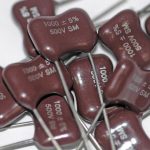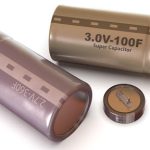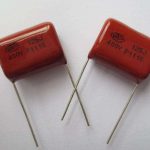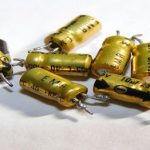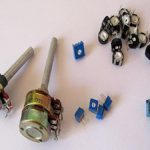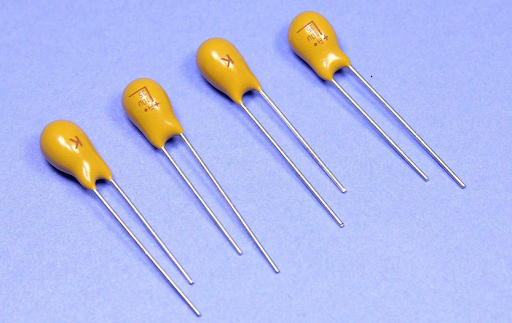
Tantalum Capacitors are known as a subtype of standard electrolytic capacitors. They are constructed of tantalum metal which performs as the anode and is covered by a layer of oxide which functions as its dielectric and is surrounded by a conductive cathode. The utilization of tantalum allows for a very thin layer of dielectric. This gives these capacitors their high capacitance value per volume, superior frequency properties compared to other capacitors, and high stability over time. Tantalum capacitors are commonly polarized, which means that they are connected to a DC source that provides the correct terminal polarity.
Developments in technology have allowed these capacitors to be used in various circuits often found in the automotive industry, laptops, mobile phones, etc., most often as surface mount devices. Such capacitors occupy less space on a Printed Circuit Board and allow for more packing densities.
Construction of Tantalum Capacitors
Like any other electrolytic capacitor, Tantalum Capacitors also consist of an anode, cathode, and some electrolytes. The anode is separated from the cathode. Therefore, only a small leakage of DC may flow through the capacitor. The anode is made from pure tantalum. The metal is grounded into powder form, and then it is sintered onto the pellet at high temperatures. This creates a porous anode featuring a high surface area. A high surface area means that the capacitor has increased capacitance values.
The anode is covered with a layer of insulating oxide which functions as the dielectric here. This process is known as anodization. It is crucial to precisely control this step to decrease tolerances and ensure correct capacitance values as the extent of the oxide growth will determine the thickness of the dielectric.
When it comes to solid electrolytic capacitors, the electrolyte is added to the anode through pyrolysis. Such capacitors are dipped into a special solution and put in an oven to create a manganese dioxide coat. This process is repeated until a thick coating is formed on all the internal and external surfaces of the pellet. At last, the pellet is dipped into silver and graphite to create a good cathode connection. Compared to solid tantalum capacitors, wet tantalum capacitors use a fluid electrolyte. After the anode is sintered and the dielectric layer is formed, it is dipped into a liquid electrolyte consisting of an enclosure. The enclosure combined with the electrolyte serves as the cathode in the wet tantalum capacitor.
Advantages of Tantalum Capacitors
In comparison to aluminum electrolytic capacitors, tantalum capacitors have the following advantages?
Small in Size
Tantalum Capacitors have a large capacitance value per unit volume because they use tantalum powder with very fine particles. The dielectric constant is 17 times higher than that of aluminum oxide.
Operating Temperature
Generally, these Capacitors operate at a temperature of -50°C to 100°C. Aluminum electrolytic capacitors can also operate within this range, but the performance of tantalum capacitors is far superior to that of the aluminum electrolytic capacitor.
Good Performance
The tantalum oxide film used as dielectric in these capacitors is highly resistant to corrosion and maintains a good performance for longer periods. This means they have a long service life, high insulation resistance, and low leakage current.
Impedance Frequency
The capacitance diminishes fundamentally for capacitors with unfortunate frequency qualities while the working frequency is high, and the misfortune likewise increments strongly. However, strong tantalum electrolytic capacitors can work above 50kHz. With the frequency increment, tantalum capacitor will likewise show a lessening in the limit. However, the decline is moderately small.
The information shows that while working at 10kHz, the capacity of Tantalum Capacitors drops by under 20%, while the capacity of aluminum electrolytic capacitors comes around as much as 40%.
High Reliability
Tantalum oxide film has stable compound properties because Ta2O5, the tantalum anode substrate, can endure strong acids and bases. This way, it can utilize strong electrolytes or fluid electrolytes with low acid resistivity, which makes the deficiency of tantalum electrolytic capacitors not exactly that of aluminum electrolytic capacitors, and the temperature soundness is great.
Applications of Tantalum Capacitors
- These capacitors are utilized in the sample and hold circuits that depend on low leakage current to accomplish a long hold duration.
- Such capacitors are used for power supply filtering on cell phones and computer motherboards due to their long-term stability and compact size, which Is commonly available in surface mount form.
- They are available in military specifications versions that offer stringent tolerances and a greater operating temperature range.
- Because of their high stability, they are widely utilized in medical electronics.
- Audio equipment also uses tantalum capacitors when high stability is required.









